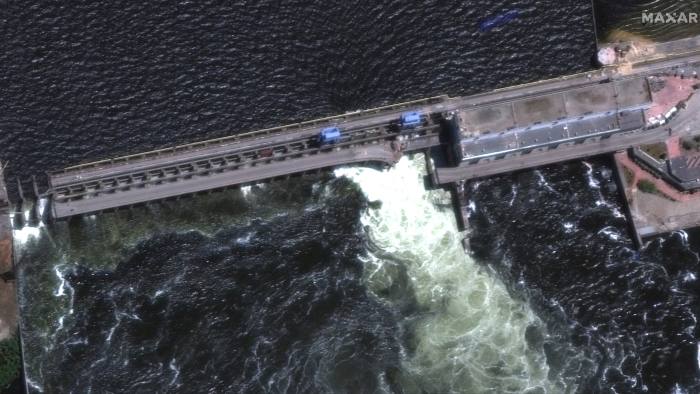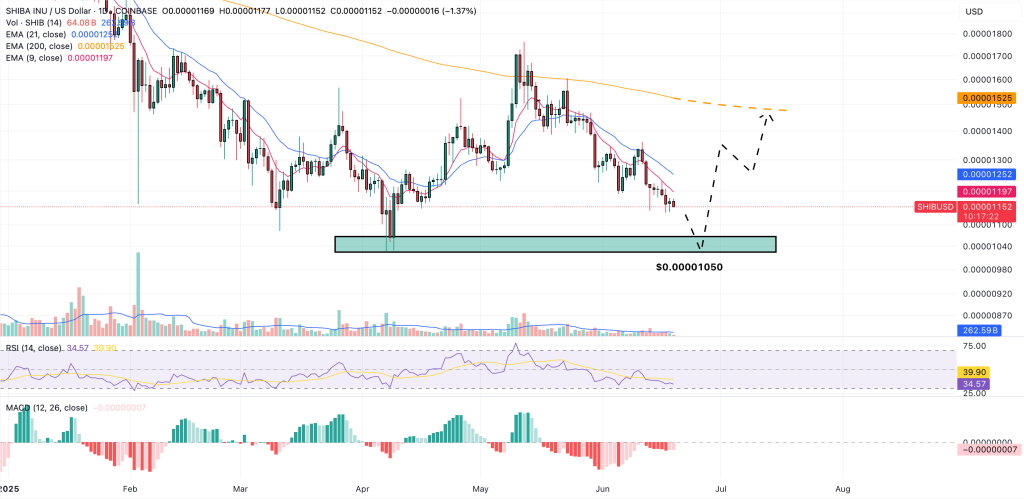The Kakhovka dam spanning the Dnipro river in southern Ukraine was breached on Tuesday, flooding swaths of territory ahead of an expected Ukrainian counteroffensive and threatening crucial water supplies to a nuclear power plant.
Russia and Ukraine blamed each other for the damage, which Kyiv warned would have “catastrophic consequences” and affect dozens of settlements as well as the Zaporizhzhia nuclear power plant, which relies on water flow from the reservoir upstream of the dam to cool the reactors.
Oleksandr Prokudyn, governor of Ukraine’s Kherson region, said Russian forces which control the area had blown up the dam and ordered the evacuation of several villages along the Ukraine-controlled western bank of the Dnipro river.
Water levels in the area at risk, which Prokudyn said included part of the regional capital Kherson, could become critical as early as 11am, he added. Riverside districts of Kherson were already being flooded on Tuesday morning, according to local media reports.
Ukraine’s president Volodymyr Zelenskyy called an emergency security council meeting and blamed “Russian terrorists” for the explosion.
“The destruction of the Kakhovka hydroelectric power station could have catastrophic consequences for the Zaporizhzhia nuclear power plant, which uses water from the Kakhovka reservoir to cool nuclear reactors,” said Mustafa Nayyem, head of Ukraine’s State Agency for Restoration.
Energoatom, Ukraine’s nuclear power operator, said waters levels in the Kakhovka reservoir were dropping, but the level in the plant’s cooling pond stood at 16.6m “which is sufficient for the power plant’s needs”.
The International Atomic Energy Agency said there was “no immediate nuclear safety risk at the plant” but it was monitoring the situation.
The flooding is also likely to complicate any Ukrainian plans for an amphibious assault on the area during an anticipated counteroffensive.
The dam and its hydroelectric power station, built in 1956, were one of the country’s largest energy facilities, containing about 18 cubic kilometres of water and providing electricity to more than 3mn people.
As a crucial part of the country’s energy infrastructure, “its destruction would have far-reaching consequences beyond the immediate area”, Nayyem said, adding that it could “lead to hundreds of thousands of victims”.
“Russian military forces may consider that the breakthrough of the dam could cover their retreat from the right bank of the Dnipro and prevent or delay Ukraine’s advance across the river,” Nayyem said.
Videos on social media showed water surging through an enormous hole in the dam from its reservoir, which also supplies a canal that brings water to the Russian-occupied Crimean peninsula. Satellite images made by Maxar Technologies showed damage to the dam’s sluice gates and a section of road.

Drone footage shows water breaching the destroyed Kakhovka dam © Reuters
Drone footage shows water breaching the destroyed Kakhovka dam © Reuters
Russia captured the entire Kherson region, which is bisected by the Dnipro, during the early weeks of President Vladimir Putin’s invasion last year, before retreating across the river from the regional capital last November.
Despite surrendering Kherson to Ukraine, Putin still officially considers the city part of Russia and its residents to be Russian citizens after a botched attempt to annex four south-eastern Ukrainian regions prior to the retreat.
Ukraine and Russia have routinely accused each other of shelling the dam, the hydroelectric station and the nuclear power plant.
Zelenskyy said last year that Russia planted mines in the area while preparing its retreat, which he warned could cause a “large-scale disaster” and destroy water supplies to Crimea.
Vladimir Leontiev, Russian-appointed mayor of the occupied town of Nova Kakhovka, claimed Ukrainian forces had shelled the dam and caused it to collapse, according to state news agency Tass.
Leontiev said Russian authorities would evacuate locals at risk from the flooding, which he said affected about 300 homes in nearby villages. Russian-controlled emergency services said about 80 towns could be affected.
EU council president Charles Michel blamed Moscow for the dam breach. “The destruction of civilian infrastructure clearly qualifies as a war crime — and we will hold Russia and its proxies accountable,” he wrote on Twitter.
Credit: Source link











